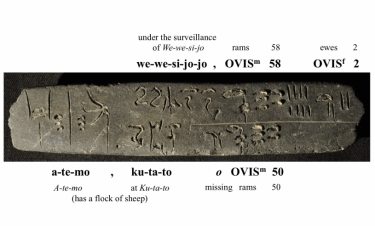Category Archive 'Technology'
06 Jun 2023


Joel Kotkin, in the Spectator, finds the former hub of innovation today sunk in decadence and decline.
‘We used to build the future. Then we designed it, now we just think about it’
The collapse of Silicon Valley Bank is the latest indicator that the Valley – site of nothing less than an economic miracle in recent decades – is now in big trouble. Other signs include mass layoffs in the tech sector and a post-pandemic real estate downturn. The Valley, it seems, is entering a period of decadence that raises the prospect of long-term decline.
The start of this decline has coincided with a shift from the physical to the virtual. The Valley’s roots were in the old engineer-driven economy, one connected to the rest of the country, and to working-class America – somebody, it’s easy to forget, has to make the hardware. Today tech is dominated by a cognitive elite of Ivy Leaguers, management consultants and MBAs. ‘We used to build the future,’ Leslie Parks, who formerly directed redevelopment efforts in San Jose, once told me. ‘Then we designed it, now we just think about it.’
But the Valley has slowly left the industrial battlefield – it has lost over 160,000 manufacturing positions over the past two decades. It bought into the idea that the unique genius of its financial and corporate culture would be enough for it to thrive and profit as production headed first to Japan, then China and, more recently, to other parts of North America.
This is a familiar story. Consider, for example, how British industry lost its edge: the Industrial Revolution created a new class of tycoons; then the tycoons’ sons sought a return to the aristocratic past, eschewing dirty factories for elegant postings in the City or a relaxed life in their country estates. More recently, Detroit’s world-beating automotive industry squandered its technological and manufacturing advantages in a rush, pushed by Wall Street and its own financial managers, to earn easy profits from inferior products.
To be clear, the Valley is not done as a major tech centre. It still boasts a venture capital community, a remarkable concentration of engineering and other management talent, powerful universities and the headquarters of some of the biggest companies in the world. And it remains home to many of the tech giants that now exploit their monopolistic advantages. But that is not the same thing as being the place where the world looks for a vision of the future, as it once was. Even if the Valley still matters, it may no longer dominate the future as its denizens once assumed it would. Instead, it will face fierce competition for tech supremacy – from other countries, and other parts of this one.
This reflects two different phenomena: rising competition from other regions – and an internal rot that has infected the Valley. In its first few remarkable decades, the Valley was defined by its openness, its culture of competition and connection to the general economy. The people who built it, such as David Packard and Bill Hewlett, Fairchild Semiconductor co-founder Robert Noyce, and Apple’s Steve Jobs were, foremost, industrialists. They had a vision of how to use new technology to enhance productivity and make money.
Over the last decade or two, the Valley has outsourced much of its industry. Apple produces two-fifths of its products in China, more than four times what is made in the United States. Other tech giants don’t make anything. Rather than trying to build a better mousetrap, big tech now makes much of its billions off surveillance – the source of the wealth generated by Google and Meta – and by disintermediating retail businesses. It is a far cry from the optimistic promise of a better tomorrow on which the Valley was built.
Three tech firms now account for two-thirds of all online advertising revenues, which now represent the vast majority of all ad sales, controlling in some cases upwards of 90 per cent of the market. Even in bad years, they can persist by laying off employees, relying on inertia to garner income without worry of competition in what the author David P. Goldman neatly summarises as ‘the transformation of disruptive tech companies into rent-seeking monopolies.’
Many progressives persist in seeing the Golden State, and particularly Silicon Valley, as harbingers of a better, greener, more egalitarian future. In the words of two leading academics ‘California Capitalism’ remains ‘distinctive,’ ‘a model of an environmentally friendly economy that epitomises fiscal responsibility, innovation’ as well as ‘inclusive, sustainable, long-term growth.’
This vision could not be further from reality. The stranglehold of mega-firms and the associated Wall Street and venture capital money machine has undermined competition in fields from video games to artificial intelligence to cloud services to the metaverse and AI. To be sure, there’s some competition among the giants, much as there was between aristocratic clans in Europe or Japan’s feudal daimyo, but there are vanishingly diminished opportunities for the sort of startup that made up much of Silicon Valley Bank’s deposit base. Tech today is largely a game played between giants who, if they see promising technology, simply acquire it. Tech entrepreneur turned author Antonio García Martínez has called the contemporary Valley ‘feudalism with better marketing,’ a ‘highly stratified’ quasi-medieval society ‘with little social mobility.’ With control of key markets, firms that columnist Michael Lind refers to as ‘toll-booth companies’ can exact money from consumers who have little choice of going elsewhere – a bit like feudal lords. And if these barons compete, it is against one another. Largely ignored has been the impact of these changes on the people who live in the Valley. In the Eighties and Nineties it was heralded as ‘an exemplar of middle-class aspiration.’ No longer. And that, too, is thanks in part to deindustrialisation.
The kinds of tech jobs being created in the Valley produce opportunities only for a narrow subset of highly skilled, well-connected or credentialed employees. The Bay Area has been described as ‘a region of segregated innovation.’ Lower- and even mid-level workers at firms such as Google sometimes sleep in their cars while others have been forced into mobile-home parks or even homeless encampments.
RTWT
23 Jan 2022
She has little space, but a helluva lot of gadgets.
HT: Vanderleun.
18 May 2021


Greek Reporter claims that a new on-line database created by Dr. Ester Salgarella, a Junior Research Fellow in Classics at St John’s College, Cambridge, aspires to be the Rosetta Stone that will make possible the decipherment of Linear A.
The Minoan language known as “Linear A” may finally be deciphered with the help of the internet, which can be used to uncover previously-hidden links to the much-better understood Linear B language, which developed later in the prehistoric period.
The puzzle of Linear A has tormented linguists for many decades, as they attempted to link it somehow to Linear B, which was translated successfully for the first time in the 1950s. Linear B was used on the Greek mainland and Crete 50-150 years later than Linear A.
Understanding the link between them and decoding the secrets of Linear A would allow experts to paint a much more complete picture of Minoan civilization going back as far as 1,800 BC.
Linear A, which was used by the Minoans during the Bronze Age, exists on at least 1,400 known inscriptions made on clay tablets. The language has baffled the world’s top archaeologists and linguistic experts for many years.
RTWT
06 Dec 2020

Temporarily Locked on Top.

About six months ago, it suddenly became the case that you had to do something every 90 days to update your SSL Certificate, or else anyone logging onto your web page got redirected to a warning that yours is an insecure site.
It took several occurrences before it dawned on my dim reptilian intelligence that this unhappy state of affairs was going to keep happening and steps needed to be taken to avoid it. When I looked into it, my hosting company explained that I could switch to a different hosting plan on a different server for a few bucks more per month.
Sure, I said, Let’s do that.
Well, they took their time, and moved NYM on Thanksgiving Day. Chaos ensued. Connecting to NYM commonly produced 103 — Bandwidth Exceeded errors, and trying to upload a post crashed WordPress.
It turned out that they offered me a plan with hardly any bandwidth, completely inadequate for NYM’s traffic. And changing servers resulted in several plugins acting up and causing everything to crash.
I used to get great support from Hostica, but this time I was left hanging with no responses. So I pulled the plug on Hostica.
I moved over to a new hosting company, which it turns out, amusingly, is in Lithuania. (I’m of Lithuanian descent, you see.)
Things are not entirely different. I’ve been discovering that, nowadays, these hosting companies all seem to expect to you go to their site and fiddle with the mechanics of it all yourself. Since the need arises once every five years or so, one’s personal familiarity with all this is lacking.
So… the migration has been done, and NYM’s new Name Server Address has finally propagated (It can take 48 hours). It is not crashing so far. And I set up SSL so you should not get warnings. The only problem is that I seem to have lost a couple of days recent postings.
More surprises may be in store, but I think the worst is over.
Sigh, I used to be hosted by this religious fanatic nerd in Texas. I could just phone Ed, and Ed would fix whatever. Unfortunately, somebody hired Ed for a real IT job and part of the deal included Ed giving up moonlighting as a hosting service.
UPDATE: I just found that I’ve got the blog from yesterday sitting on an open browser page, so now I can just, laboriously, reload all the missing postings.
08 Oct 2020

Cell Mate Chastity Cage (Short Model).
A $189 Chinese Bluetooth Chastity Ring designed for Domination games, or mere assured fidelity, has been shown to be vulnerable to hacking, and can be permanently locked by third parties, requiring the use of an angle grinder or other heavy power tool to cut the device off. A drastic solution, to say the least.
Additionally, its security flaws allow the hacker to steal the user’s passwords, birthday, location, and other sensitive data.
Gizmodo
Drudge Now
18 Sep 2020
The moth and fly embroideries are as elaborate and astonishing as the naturalistic trout fly imitations devised by the late Bill Blades. Cf. William Blades, Fishing Flies and Fly-Tying, 1951.
19 Jan 2020


Interior of the Pantheon in Rome.
In his excellent King Arthur’s Wars: The Anglo-Saxon Conquest of England (2016), retired British officer Jim Storr (now teaching at the Norwegian Military Academy in Oslo) puts the astonishing Roman technological achievements into perspective.
Roman engineers… were astonishingly skillful. In the years just before the birth of Christ they built an underground tunnel to bring water to Bologna in Italy. The tunnel was 20 kilometres long. Hundreds of years earlier they had drained the Pontine marshes south east of Rome. In the second century A.D. they brought water to a city in what is now Syria from a source over 130 kilometres away. It had an average gradient of just 3 centimetres’ fall in every kilometre. Many kilometers of it still exist today. In several cities in Europe, Roman aqueducts still provide water from several kilometres away. The world-famous Trevi fountain in Rome is supplied by the Virgo aqueduct, 22 kilometres long and built in 19 BC. The Pantheon in Rome was built in about 126 A.D. It is the world’s first large mass-concrete dome building. It is over 40 metres high and is visited by thousands of tourists, in complete safety, every day: almost 2000 years later.
Roman engineers were not just good builders. They were also world-class surveyors. If you walk south from London Bridge today, you soon reach Kennington Park Road (the A3). As you look along it you are looking in the precise direction of the east gate of Chichester, 59.84 Roman miles from the end of London Bridge. The surveyors who first laid out that road, probably in the first century A.D., knew precisely which direction Chichester lay in. There are two major rows of hills (the North and South Downs) in between.
In about 155 A.D. Roman surveyors re-aligned a section of 82 kilometres of frontier defenses in southern Germany. The southernmost 29 kilometres ran over several heavily wooded ridges, yet none of the forts (a Roman mile apart, with turrets in between) is off the direct line between start and finish by more than 1.9 metres. That is a deviation of less than five minutes of arc (five sixtieth of a degree). The accuracy which Roman surveyors achieved was phenomenal. It was only bettered with the invention of surveying instruments with magnifying optics (such as the theodolite) in the 17th century. Yet, as far as is known, Roman surveyors did not even have an instrument for observing and copying angles directly (such as a protractor). However, by about the year 500 or so, nobody could even build in stone, let alone lay out aqueducts or build in concrete. Concrete only came back into use in the late 18th century.
Your are browsing
the Archives of Never Yet Melted in the 'Technology' Category.

Feeds
|
![]()









